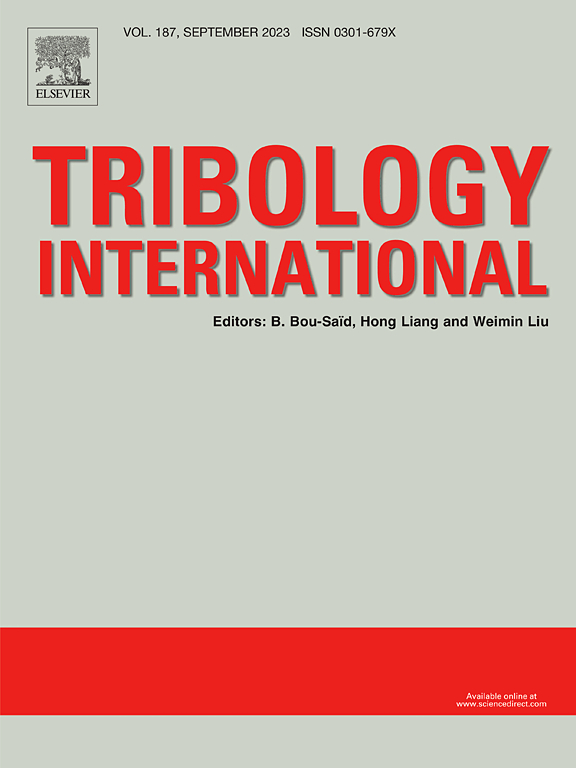添加四丁基酚和EVA后无花果油氧化稳定性和摩擦学响应的评价
IF 6.1
1区 工程技术
Q1 ENGINEERING, MECHANICAL
引用次数: 0
摘要
研究了无花果油(FCO)在叔丁基对苯二酚(TBHQ)和乙酸乙烯酯(EVA)添加剂的摩擦磨损性能。采用傅里叶变换红外光谱(FT-IR)、聚合物和热分析等方法对添加添加剂和接触面的基础无花果油的润滑特性进行了分析。研究表明,当施加80 N载荷时,与其他样品相比,0.9 wt% EVA表现出更好的摩擦系数(COF)降低。然而,SAE 5W-30在耐磨性方面优于0.9 wt% EVA + 0.3 wt% TBHQ混合FCO。综上所述,在80 N时,FCO + 0.9 wt% EVA + 0.3 wt% TBHQ的Ra百分比降低效果最好,为52.30 %,说明添加剂的修复作用对润滑性有较好的改善作用。本文章由计算机程序翻译,如有差异,请以英文原文为准。
Assessment on oxidative stability and tribological response of Ficus carica Oil, enhanced with TBHQ and EVA additives
This study tested the friction and wear behavior of Ficus carica oil (FCO) with tertbutylhydroquinone (TBHQ) and ethylene-vinyl acetate (EVA) additives. The lubricity nature of base fig oil with additives and the contact surfaces, were analysed using Fourier-transform infrared spectroscopy (FT-IR), polymeric and thermal analyses. The study established that 0.9 wt% EVA exhibited a better coefficient of friction (COF) reduction compared with other samples when the 80 N load was applied. However, SAE 5W-30 was better than 0.9 wt% EVA + 0.3 wt% TBHQ blended FCO in terms of wear resistance. Conclusively, the FCO + 0.9 wt% EVA + 0.3 wt% TBHQ gave the best Ra percentage reduction of 52.30 % at 80 N, indicating the additives mending effect for better lubricity.
求助全文
通过发布文献求助,成功后即可免费获取论文全文。
去求助
来源期刊

Tribology International
工程技术-工程:机械
CiteScore
10.10
自引率
16.10%
发文量
627
审稿时长
35 days
期刊介绍:
Tribology is the science of rubbing surfaces and contributes to every facet of our everyday life, from live cell friction to engine lubrication and seismology. As such tribology is truly multidisciplinary and this extraordinary breadth of scientific interest is reflected in the scope of Tribology International.
Tribology International seeks to publish original research papers of the highest scientific quality to provide an archival resource for scientists from all backgrounds. Written contributions are invited reporting experimental and modelling studies both in established areas of tribology and emerging fields. Scientific topics include the physics or chemistry of tribo-surfaces, bio-tribology, surface engineering and materials, contact mechanics, nano-tribology, lubricants and hydrodynamic lubrication.
 求助内容:
求助内容: 应助结果提醒方式:
应助结果提醒方式:


